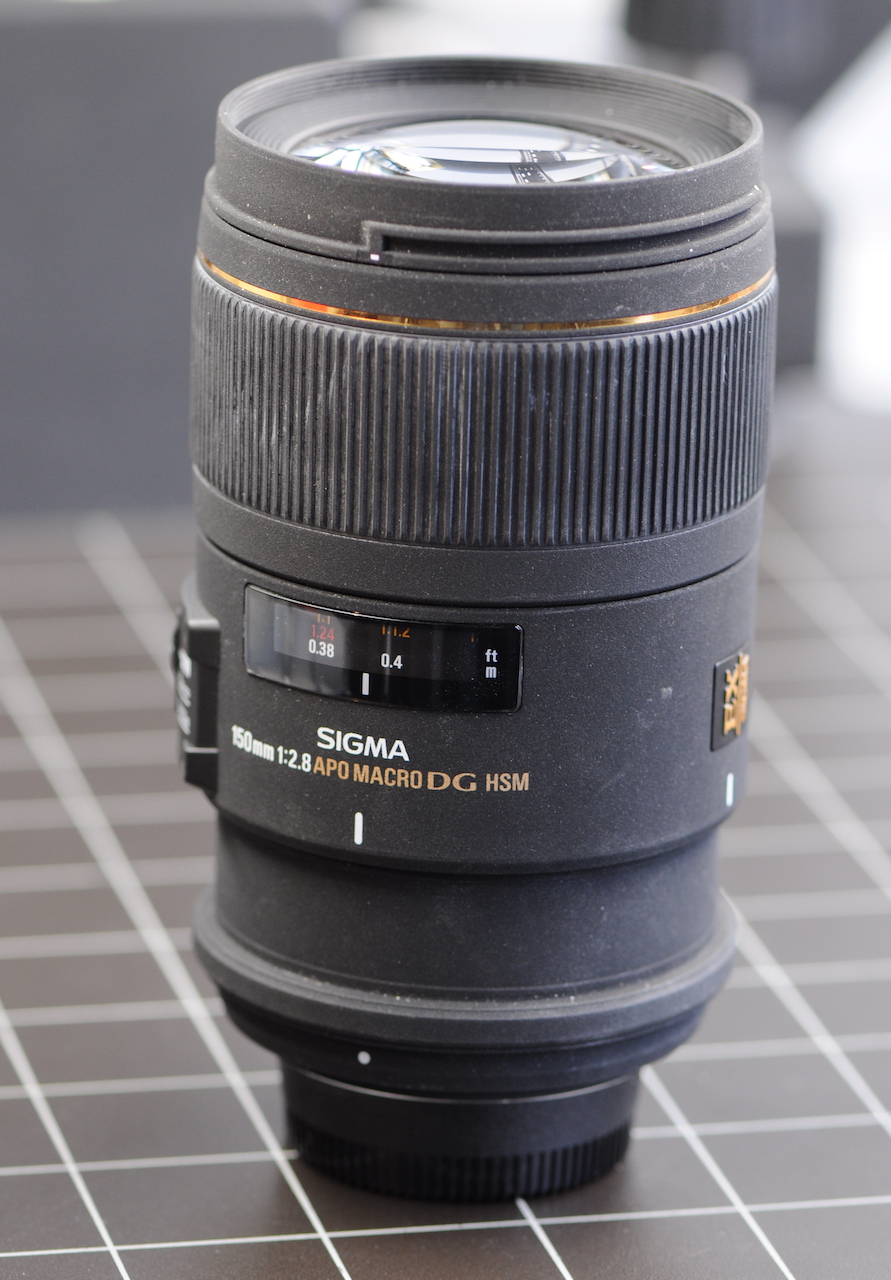Sigma 150
My first non-Nikon lens, this has certainly not disappointed. Basically my Nikon 105 was stolen, and I wanted to get another macro and I wanted to get something different. This Sigma has a longer focal length and a reproduction ratio of 1:1 (the same as Nikon 105). The difference for macro photography is not so much, technically you can stand a bit further back. This allows two things, you can get more light to illuminate your subject, you can use larger apertures as the depth of field increases with the distance, so you get more of the scene in focus at (say) f/2.8 when you are 60cm away rather than at 30cm.
Like all macro lenses, you can use this lens also for normal work where you do not focus that close. At this point this is an excellent prime lens with f/2.8. Especially on an APS-C camera you get a quite interesting lens that works well for landscapes.
This lens has vibration reduction (an older model does not), but I have read a lot of reviews that complain that it fails rather soon, and my used Sigma also does not have it working properly. However, this is not the end of the world. Sadly, Sigma has stopped making this lens (as of 2020). You will find mostly the 105mm version but the two longer versions (this one and the 1.65kg 180mm f/2.8) are not so common.
| Price | Rather expensive |
|---|---|
| Weight | Very Heavy, 1'200g |
| Good for | Macro, landscape, details |
| New or used | No longer manufactured, also quite rare used, I have seen some around 600 |
I love macro lenses, and this one works great on a full frame camera. In all honesty there is not much difference when using it as a macro. I like that it is a longer lens than the Nikon 105 when I am using it in museums and while hiking. Although I can not say I am a big fan of the weight. This is quite a heavy lens. Fortunately the tripod collar comes off, and it is not a problem to use it without a tripod when there is decent light.
I like longer lenses and this is why I use my macros usually on APS-C cameras. This one becomes a 225mm long lens at f/2.8. The problem is the weight. It is very unlikely that you will survive a day of shooting with only this lens, so you have to carry a second lens/camera with it, on top of the already significant weight. When I combine APS-C and full frame cameras, I usually have a macro on the APS-C and a Nikon 35 or a Nikon 20 on the full frame.
Gallery / see also
These pages are for Amateur Photographers and not really for seasoned photographers and professionals. I have no affiliation or commercial interest with any brand/make. I write from my own experience. I ended up using mainly Nikon, so I am more familiar with this brand than others. See price for notes on pricing as well as photography related links.







